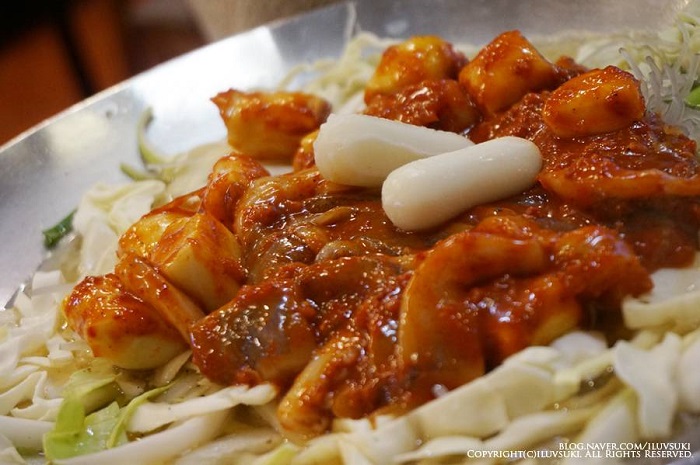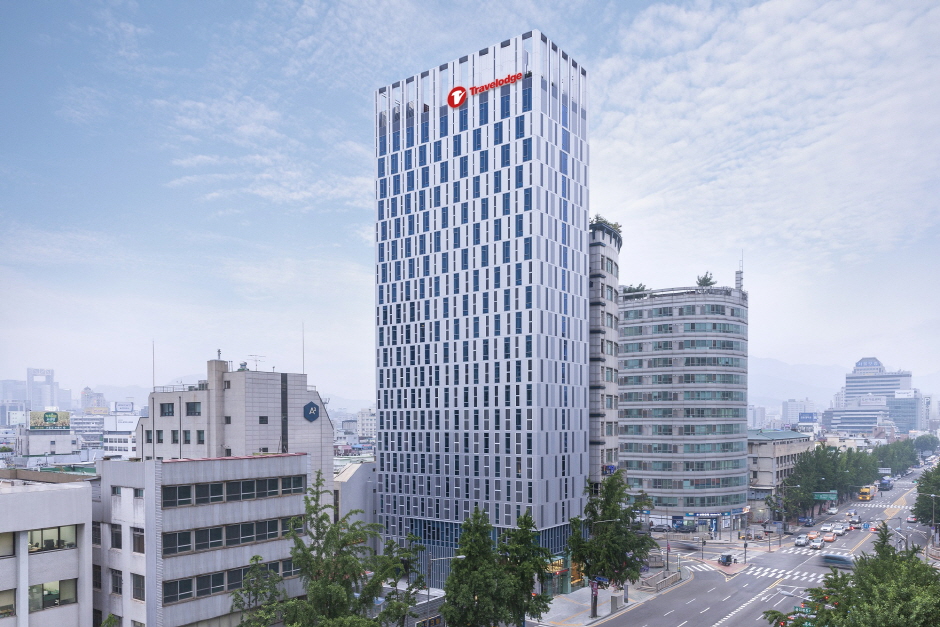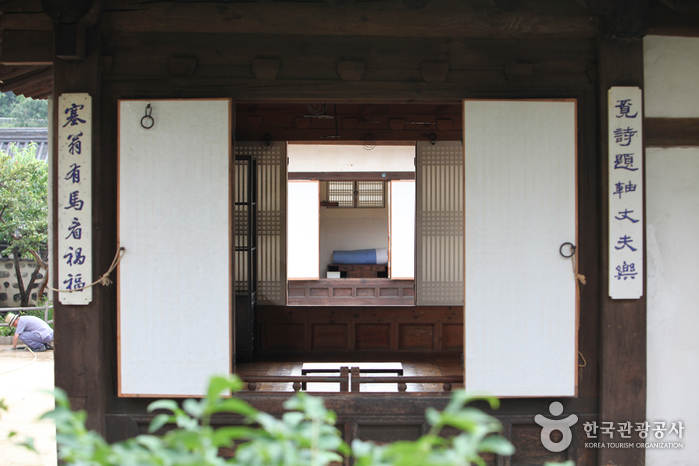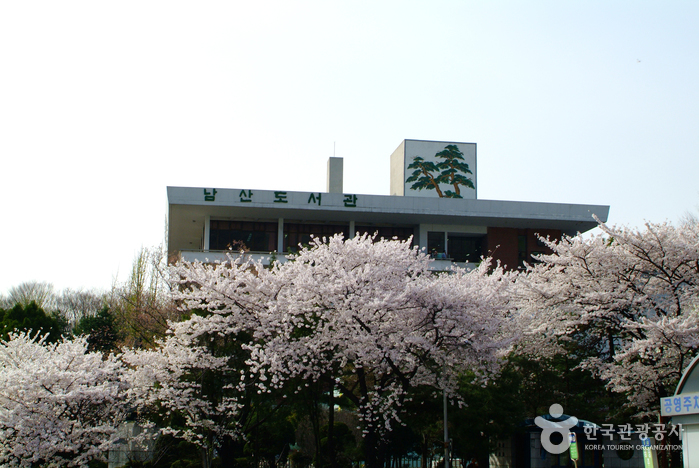Hwachang Co., Ltd. - Seoul Branch [Tax Refund Shop] (화창토산 서울)
3.1Km 2024-04-18
212, Yeonhui-ro, Seodaemun-gu, Seoul
-
JDX - Jongno Branch [Tax Refund Shop] (JDX 종로)
3.1Km 2024-04-19
1F, 236-1, Jong-ro, Jongno-gu, Seoul
-
Bulbap(불밥)
3.1Km 2020-12-24
11 Ewhayeodae 8-gil Seodaemun-gu Seoul
+82-2-362-9833
It is a restaurant serving dishes at affordable prices. This restaurant's signature menu is spicy chicken. This Korean dishes restaurant is located in Seodaemun-gu, Seoul.
Travelodge Dongdaemun (트레블로지 동대문 호텔)
3.1Km 2021-07-13
359, Dongho-ro, Jung-gu, Seoul
+82-2-2160-8888
Travelodge Dongdaemun is located in the heart of Seoul, surrounded by popular tourist attrctions. The hotel provides services that suit the needs of both leisure and business travelers alike at an affordable price. Dongdaemun is a popular fashion district where tradition and modern cultures meet. Several tourist attractions are located within 10 to 15 minutes via public transportation from the hotel, such as Dongdaemun Design Plaza, Cheonggyecheon Stream, Heunginjimun Gate, Insa-dong and the royal palaces.
Black Yak - Jongno Branch [Tax Refund Shop] (블랙야크 종로)
3.1Km 2024-04-22
22, Jong-ro 36-gil, Jongno-gu, Seoul
-
Ewha Womans University (이화여자대학교)
3.1Km 2023-07-04
52, Ewhayeodae-gil, Seodaemun-gu, Seoul
+82-2-3277-2114
Ewha Womans University is Korea's first women's university founded in 1886 by American Methodist missionary Mary Scranton. Ewha Womans University is also the most famous women's university in Korea and its name originates from Ehwa Hakdang, a name given by Empress Myeongseong in 1887. Ewha Womans University created a four-year university course in 1910, and in 1943, the name of Ewha was taken away during the Japanese colonial period and downgraded to a one-year school. In October 1945, the year of Korea's independence from Japan, it regained the name of Ewha and was promoted to a university with eight departments. Currently, it consists of 15 graduate schools, 11 colleges, and 67 departments, and there are 8 affiliated research institutes.
The street in front of Ewha Womans University is famous for shopping. This place is full of clothing stores and neat food that boast a popping sensation to suit the tastes of female college students. The shopping street in front of Ewha Womans University is a straight road that lies ahead of Exits 2 and 3 of Seoul Subway Line 2. Alleyways stretch out like branches around this street and are filled with various accessory shops, clothing stores, shoe stores, restaurants, cafes, and beauty salons.
Haepungbuwongun Yun Taekyeong's Jaesil (해풍부원군윤택영댁재실)
3.1Km 2021-11-10
28, Toegye-ro 34-gil, Jung-gu, Seoul
+82-2-3396-5882
Haepungbuwongun Yun Taekyeong's Jaesil is a shrine house built by the father-in-law of King Sunjong of Joseon dynasty in 1906 when his daughter was proclaimed the crowned princess of Joseon and entered Changdeokgung Palace to later become Queen Sunjeong. Red pine trees salvaged from the demolition of Gyeongungung Palace were used to construct the house. It was originally located in Jegi-dong, Dongdaemun-gu, but was later restored and moved to its present location. The shrine of the house that was destroyed in 1960 was also restored.
Because the house is more of a shrine rather than residential living quarters, it has many unique features. For example, unlike other houses, it has the anchae (women’s quarters) located across from sarangbang (men’s quarters) with daecheong (living room) positioned between them.
Namsan Library (서울특별시교육청 남산도서관)
3.1Km 2021-07-07
109, Sowol-ro, Yongsan-gu, Seoul
+82-2-754-7338
Namsan Library opened as Kyeongseong Prefectural Library in 1922 as a public library in Myeong-dong, Jung-gu, Seoul. The library was moved to the current site in 1964 with a newly built building and its name changed to Namsan Library in 1965. This concrete building was built in 1964 and was designed by architect Lee Haeseong. It was designated as Seoul Future Heritage in 2013, credited for its preservation value.
It is comprised of 19 rooms and educational areas including the Humanity and Social Science Hall, Nature Science Hall, Language and Literature Hall, Electronic Information Room and more. Since opening, the library has collected nearly 500,000 books, 16,000 non-book materials, 700 continuing resources, and other special materials like old books, oriental books (including Japanese books), and more. Namsan Library also operates a reading treatment program unique to this library that began in 2005. The program includes remodeling of reading consultation room, training for people in charge of reading treatment, workshops, programs for individuals and groups. Also, various exhibitions, lectures, shows, cultural classes and other events are available all year long to enhance lifelong education.
![Hwachang Co., Ltd. - Seoul Branch [Tax Refund Shop] (화창토산 서울)](http://tong.visitkorea.or.kr/cms/resource/71/2889071_image2_1.jpg)



![Black Yak - Jongno Branch [Tax Refund Shop] (블랙야크 종로)](http://tong.visitkorea.or.kr/cms/resource/32/2878232_image2_1.jpg)


 English
English
 한국어
한국어 日本語
日本語 中文(简体)
中文(简体) Deutsch
Deutsch Français
Français Español
Español Русский
Русский